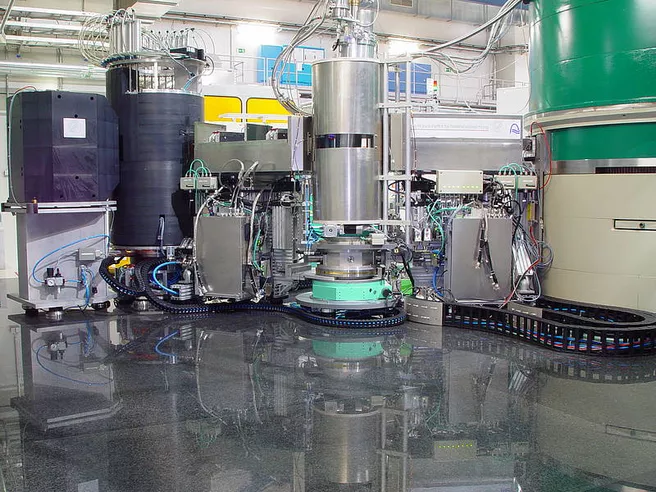At the Research Neutron Source Heinz Maier-Leibnitz (FRM II) physicists from the Max-Planck-Institute for Solid State Research (Stuttgart) found new puzzling features in superconducting niobium and lead, which are not explained by the accepted BCS theory.
The problem is thought to be solved since 50 years - obviously it was not possible to see all the details. In 1957 John Bardeen, Leon N. Cooper and John R. Schrieffer explained, why metals conduct electrical current below a certain temperature without losses. Now physicists from the Max-Planck-Institute for Solid State Research used the high-resolution instrument TRISP at the FRM II to investigate the behaviour of electrons in the metals niobium and lead in this superconducting state. They found a hitherto unknown detail in the spectrum of the lattice vibrations, which coincides with the so called energy gap of the electrons in the superconducting state. This coincidence is either an unknown aspect of the accepted theory or new physics not described by this theory.
Pegor Aynajian, Thomas Keller, Lilia Boeri, Steven M. Shapiro, Klaus Habicht und Bernhard Keimer
Energy Gaps and Kohn Anomalies in Elemental Superconductors
Science 319, S. 1509, 2008
Contact:
Prof. Bernhard Keimer
Max-Planck-Institut für Festkörperforschung, Stuttgart
Phone: +49 711 689 - 1631
E-mail: B.Keimer(at)fkf.mpg.de
Dr. Thomas Keller
Max-Planck-Institut für Festkörperforschung, Stuttgart &
Forschungsneutronenquelle Heinz Maier-Leibnitz
Phone: +49 89 289 - 12164
E-mail: Thomas.Keller(at)frm2.tum.de
(Source: Pressemitteilung MPG)
